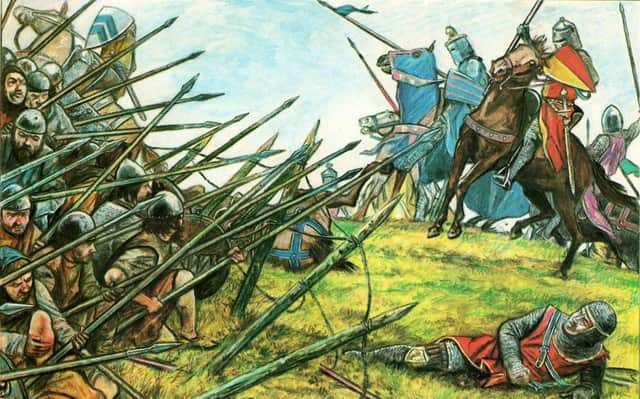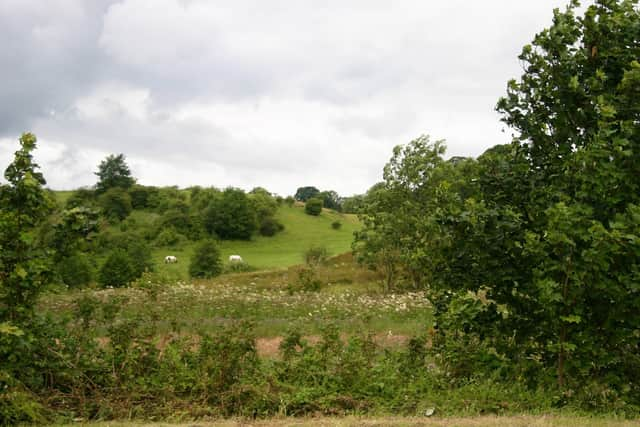Looking back with Ian Scott 'On Magdalene's Day' and the Battle of Falkirk 1298


There is a surviving account of a visit paid to Falkirk in the 13th century by a group of visitors who later reported: “at length we arrived at Faukirke which had a nearby cemetery about which we enquired, and were then invited into the chapel of the sacred house of Mary Magdalene.” However the main connection of Falkirk to the saint is the mighty battle fought in 1298 on her day which has come down to us as the First Battle of Falkirk where the Scottish army led by William Wallace was defeated by the English host commanded by Edward I of England. As one chronicler at the time tells us “On the day of the Magdalen the people of Scotland, each with a spear in fist are come to Falkirk in a morning.”
This week sees the publication of a new book by John Walker entitled ‘On Magdalene’s Day’ which takes a fresh look at the events of that terrible day which are still a matter of great debate among local historians and other enthusiasts. John is a teacher at Carrongrange High with a history degree and a lifelong obsession with this particular story – he has been writing about the battle for over 40 years including several articles for this newspaper.
Advertisement
Hide AdAdvertisement
Hide AdThe book gives an excellent account of the years before the battle as relations between Scotland and England gradually deteriorated to the point of war. The Falkirk battle was the second encounter of these Wars of Independence and followed on from Wallace’s spectacular victory at Stirling Bridge a year earlier. John describes the build up to the Falkirk encounter as the Scottish Army assembled in great phalanx rings, for all the world like gigantic porcupines, bristling with long spears. Opposite them came the advancing English army in columns of knights, archers and foot soldiers though where exactly the fighting took place is one of the mysteries which John tries to unlock. Was it at Mumrills opposite the Beancross Restaurant or behind Callendar Woods on the Hallglen Road? Could it be near the Polmont Ski Slope or in Victoria Park which was the site favoured by our Victorian forefathers? John looks at the evidence but in the absence of any significant new finds then the mystery will remain just that.


Using many illustrations John gives a blow by blow account of the battle from the opening attacks by the English knights to the deadly rain of English arrows that saw the Scots fall “like blossoms in an orchard when the fruit has ripened”. Tens of thousands of soldiers were involved on both sides and the casualties were very heavy. It was one of the darkest days in our history and one that will continue to fascinate all with an interest in Scotland’s story. I particularly enjoyed the section towards the end called ‘tailpieces’ which is a kind of Frequently Asked Questions” list with answers of course where they are available!
John’s book is an excellent addition to previous accounts and will be welcomed by all who share our deep interest in our early history.
‘On Magdalene’s Day’ will be distributed to schools and libraries with a limited number on sale in the Steeple on the days it is open to the public, that is Tuesdays and Saturdays.